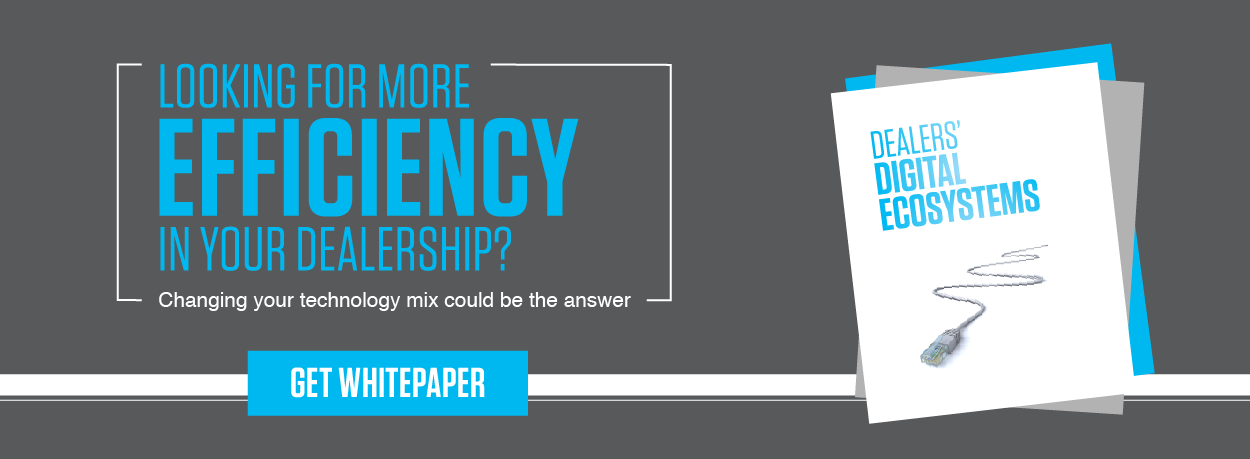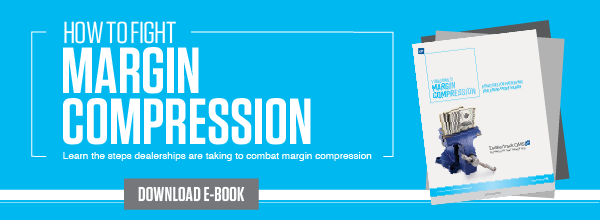After switching DMS platforms to Dealertrack, dealer groups report consistent satisfaction in several dimensions of operational improvement from streamlined data processes to better performance data.
Efficiency Gains
Personnel across dealerships report that switching to Dealertrack makes their lives significantly easier. “The deal flow is easier for sales to track,” Comptroller, Jennica Krebsbach of the Van Horn Group says. “The deal flow into accounting is a lot easier. Once the service department understood the system completely, it was all OK.”
Assistant General Manager, Brett Henkel says that some of Big Two’s personnel had to adjust to Dealertrack DMS’s graphical-user interface — its digital look and feel. “We had to explain that Dealertrack wasn’t going to look like their old system and why we were OK with that,” he says. “The big thing was that Dealertrack didn’t look like the old screen looked. But a couple of weeks in, everyone was relaxed about it. And then it was amazing how comfortable they got with it. Frontline employees picked up Dealertrack amazingly quickly as far as being able to write up a ticket or get it through finances.”
Overhead Savings
Krebsbach says that since switching to Dealertrack, the Van Horn Group has added seven more stores to the enterprise — but hasn’t had to add any accounting staff to handle the extra dealerships. As part of expanding the company, Van Horn also centralized its intra-company accounting. Relying on Dealertrack, the company has been able to cut in half its 40 administrative positions even while adding several dealerships. “There’s no way we could have done that with the legacy system,” she says. “We didn’t understand how much overhead we were going to save. But there has been huge payback.”
In addition to reduced overhead, new Dealertrack DMS customers are also seeing net profit growth in the first year. Sisbarro Dealerships reported a tripling of net profit in its first year with Dealertrack and credits a major portion of the growth to the DMS transition.
Reporting Advantages
One thing dealership managers appreciate about Dealertrack is the many extra types of data the DMS provides compared with legacy systems.
“We’ve got some unique advantages in reporting,” Bickerson says. “For example, in people performance data. We can show a service manager how each of his people is performing, in terms of their effective labor rate and gross percentage. That can spot problems. We can show, for example, if one employee’s effective labor rate has been dropping over the last couple of months. This is where we help managers spot opportunities for improvement.”
Henkel testifies to the vast improvement in this area for his company under Dealertrack compared with a legacy DMS. “The ability of managers to drill down and get information,” he says, “is incredibly better. Why are expenses up? You can scroll down to what went where, and why. That was something we used to call ‘the mystery.’ You’d have to call the bookkeeping office to figure that out. But now managers can call in from wherever they are and look at that information on their iPad or Surface Pro, in real time.”
Enabling Customization
Unlike legacy systems that are likely to charge dealerships for each new form or change order, Dealertrack specializes in accommodating special situations as part of the routine of satisfying its dealership customers.
Motorcars of Cleveland, for instance, is a unique operation that depends on delivering an extraordinary customer experience, and Dealertrack helps it succeed. Its service center is open until 3 a.m. on weekdays, and valets note the license number of every car that drives in, relaying it to the service team so each customer is greeted by name. But the key to their success is a revolutionary quick-service “assembly line” comprised of six service stations, which allows customers to follow along with their car, observe the work and even ask questions — all while being in and out in about 30 minutes. To make that kind of enterprise work, Motorcars must use multiple outside vendors and applications that tie together all their business units and also must make it easy to use to maximize employee efficiency.
Dealertrack DMS has been a huge partner in Motorcar’s effort because of its Opentrack feature, which gives customers simple, secure third-party integration with dozens of other software platforms that can serve specific functions within the multi-faceted world of an automotive retailer. In the salesroom, for example, there has been a proliferation of quote-building software platforms that representatives use to help lure buyers. Many dealership groups have written their own software for this purpose. Dealertrack easily integrates with these programs so that the dealership can execute the final deal on its DMS, process the paperwork and ensure information about that valuable customer is either entered for the first time or updated, to help the company deepen and maintain the personal relationship.
For Motorcars, Dealertrack’s flexibility provides the freedom to choose the third-party vendors that work best for its unusual business model. “If we didn’t have this feature, it would be extremely difficult to find people who could work with us because of the astronomical access fees so many DMS providers charge,” Manager, Trevor Gile says.
Closing Quickly
Dealertrack enables Motorcars Group to close its finances each month in just one and a half to two days compared with 10 or 12 days under its legacy system. “That’s a huge benefit to us,” Gile says. “We not only can close the month faster but we can hold our end-of-the-month meetings faster and get a leg up on what’s happening. We never feel like we’re running behind. We can keep up or move faster than we ever thought possible.”
Shearer, an employee at Motorcars, agrees with her boss that she “wouldn’t want to go back” to closing under the legacy system. “I probably should just get a Dealertrack tattoo which says that. Dealertrack has so many great functions that make it so easy. If someone asks me if I would go back to the same DMS even if it costs less, I would say absolutely not.” Webb Automotive President, Kelly Webb Roberts agrees. “I wish I would have switched earlier, for the entire group,” she says. “DMS shouldn’t be such a burden as it was. In the past, it has bogged people down. I wanted our staff to be able to have a system there to support them and make them efficient, where we can focus instead on customer interactions.”
For more information about the benefits of switching to Dealertrack DMS, check out our guide — DMS for a Digital Age.






